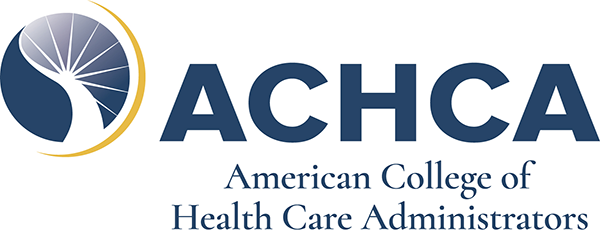Navigating Change: The Journey of Software Implementation for SNFs
In today’s rapidly evolving healthcare landscape, skilled nursing facilities (SNFs) constantly seek innovative strategies to enhance resident care, streamline operations, and stay ahead of regulatory requirements. One significant step forward for SNFs is the decision to change software systems. While implementing new software can be daunting, it presents an opportunity to revolutionize how SNFs manage their daily operations. This blog post will highlight the considerations and best practices involved in transitioning from one software system to another and how your facility can navigate this change successfully. So, fasten your seatbelts as we embark on the journey of SNFs in changing software systems.
Needs Assessment & Vendor Selection
Start by identifying the specific needs and requirements of your SNF. Pinpoint the areas where the software can bring the most value, such as resident management, billing and financial, scheduling, clinical documentation, or reporting.
Research and evaluate software vendors that offer solutions tailored to SNFs. Consider factors such as functionality, user interface, scalability, vendor reputation, customer support, and cost. Request demos and engage in discussions to find the right fit for your facility’s needs.
Tips for Success:
- Create a detailed implementation plan that outlines the tasks, timelines, and responsibilities.
- Identify staff members involved in the process and identify training gaps to prepare for the change.
- Develop a data migration strategy if existing resident and facility data are transferred to the new system. Establish clear cut-off dates for when activity will cease in the old system and when it will start in the new system.
- Collaborate with the software vendor to customize and set up the software according to your facility’s requirements. Pay particular attention to resident profiles, care plans, medication administration records, billing codes, and other relevant parameters.
Planning & Preparation
Most of us do not set out on a road trip without GPS or at least a general plan in mind. At FORVIS, we develop a plan for the plan, and then create a spreadsheet to track it! We’re big on planning because, as we all know, if you fail to plan then you plan to fail. The following are guideposts to aid in creating a map for your software implementation journey.
- Billing: Perform a thorough review of existing payers and eliminate those that are unused or redundant before software migration.
- Task your billing staff with conducting a comprehensive analysis of outstanding balances. Make all appropriate adjustments and write-offs to these balances before data is exported to the new software.
- Review contracts for managed care payers to confirm the rates and setup are consistent and accurate in the new software.
- Establish clear parameters for when balances will be moved to the new system and have clear cut-off points for posting charges, payments, and other activity between systems.
Verify all migrated data is accurate and complete by conducting thorough review and validation.
Financial:
- Reevaluate and update the chart of accounts as necessary, ensuring that accounts are organized sequentially and grouped appropriately for financial reporting purposes. Leave sufficient space to accommodate the inclusion of new accounts in the future.
- Utilize a unified chart of accounts for both billing and financial activities.
- Before data migration, it is essential to confirm that the accounts payable and receivable aging reports reconcile with the balance sheet.
- Verify the accuracy of general ledger mapping for billing setup. This helps ensure that the appropriate revenue and expense accounts are correctly assigned to billing transactions, providing accurate financial reporting and facilitating proper tracking of income and expenses.
Resident Trust Fund:
- Perform a thorough review to confirm that the bank balance and resident balance are reconciled before data migration.
- Conduct a follow-up reconciliation of these balances post-migration to verify the integrity of the data. Be sure to record cash on hand before proceeding to the starting month.
Clinical:
- Identify the patient data the software vendor will be migrating. Ensure all remaining data necessary for patient care is accessible in the prior system until it can be manually moved.
- Establish and communicate the cut-off date when all assessments should be completed in the new software.
- Develop a comprehensive training plan to address the needs of all clinical positions.
- Utilize available integration options with pharmacy, x-ray, and lab vendors.
Congratulations! You have reached your destination … sort of. Successful implementation of new software requires ongoing evaluation of its performance and impact on your facility’s operations. Seek feedback from staff and residents to identify areas of needed improvement. Continued support from the vendor may be necessary to resolve issues, explore additional features, or adapt the software to changing needs.
Remember that implementing software for your SNF is a multi-faceted process that requires strategic planning, collaboration, and ongoing support. Engage with your software vendor and staff during the implementation process to help facilitate a seamless transition and maximize the benefits of the software for your facility. We have a saying at FORVIS: “Don’t go it alone.” Reach out to your advisor early and often when considering a software change. Our knowledge and experience will help you navigate the roadblocks and detours on the journey of software implementation.
This article is for general information purposes only and is not to be considered as legal advice. This information was written by qualified, experienced professionals at FORVIS, but applying this information to your particular situation requires careful consideration of your specific facts and circumstances. Consult a professional at FORVIS or legal counsel before acting on any matter covered in this update.





This is an excellent primer for a software change project. A key element for any change project is effectively communicating with the key stakeholders. This is important as any change that impacts a stakeholder will be seen as unfavorable. Senior leadership needs to communicate with change leaders and stakeholders to communicate the intent, value, and process of executing the change needed.
This is an excellent primer for a software change project. A key element for any change project is effectively communicating with the key stakeholders. This is important as any change that impacts a stakeholder will be seen as unfavorable. Senior leadership needs to communicate with change leaders and stakeholders to communicate the intent, value, and process of executing the change needed.